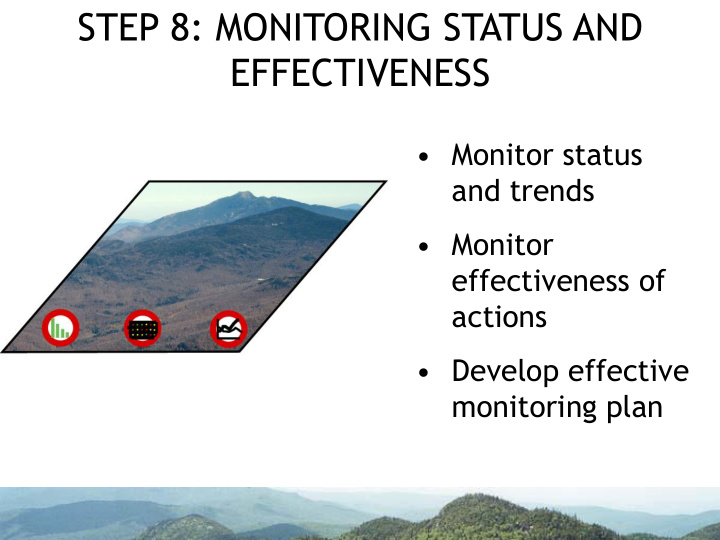



STEP 8: MONITORING STATUS AND EFFECTIVENESS • Monitor status and trends • Monitor effectiveness of actions • Develop effective monitoring plan
WHY MONITOR: • Transparency and accountability (to public, to donors) • Better decision making in a rapidly changing environment • Ensure efficient use of scarce resources • Early warning system for irreversible losses
1. MONITORING STATUS: “How is the biodiversity we care about doing?” • Monitor status and trends of key species, systems, ecological services • Monitor status of protection, conservation, sectors and policies • Monitor status of protection of key biodiversity within critical connections beyond protected areas
MONITORING STATUS: KEY ISSUES • Baseline conditions • Desired future conditions • Time lags in monitoring • Non-linear changes • Data availability • Managing data to inform decision making
2. MONITORING EFFECTIVENESS: “Are our actions having the intended consequence?” • Relies on a clear conceptual model • Looks at strategy, outcomes and impact • Develops strategic, focused indicators
Use a Situation Analysis… Key Direct Target Factor Threat …to Construct an Initial Results Chain Strategy Outcome Outcome Impact (Target) (Key Factor) (Direct Threat)
3. DEVELOPING A MONITORING WORKPLAN • Clarify objectives • Select indicators • Select methods • Develop implementation plan • Gather data • Develop thresholds for intervention • Develop clear links to decision making • Communicate results
STEP 8: MONITORING STATUS AND EFFECTIVENESS • Monitor status and trends • Monitor effectiveness of actions • Develop effective monitoring plan
Recommend
More recommend